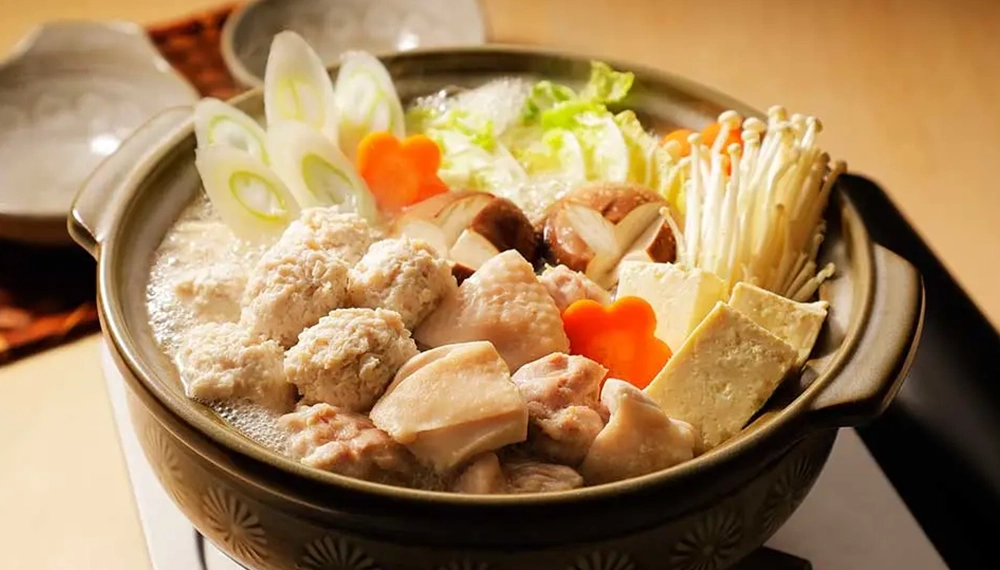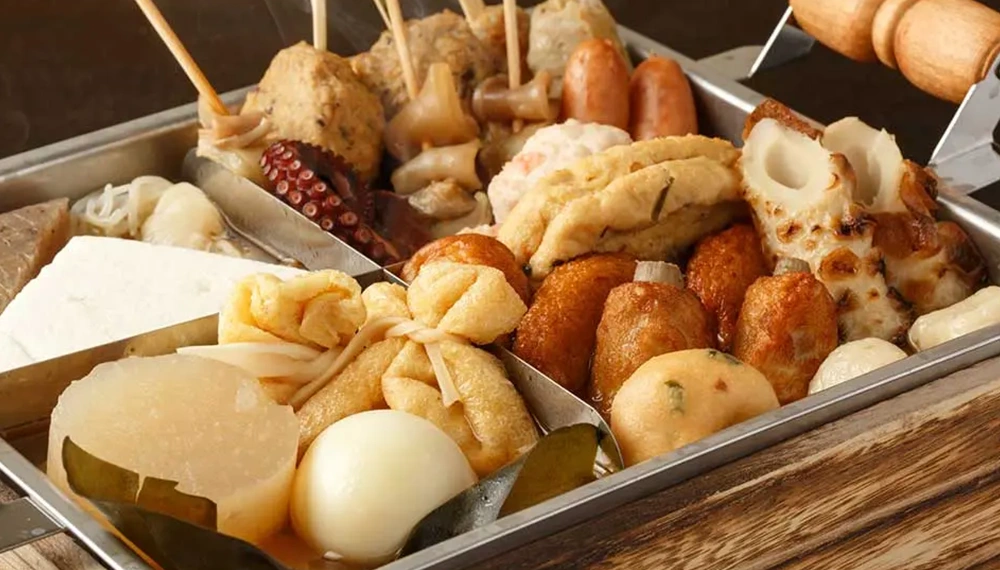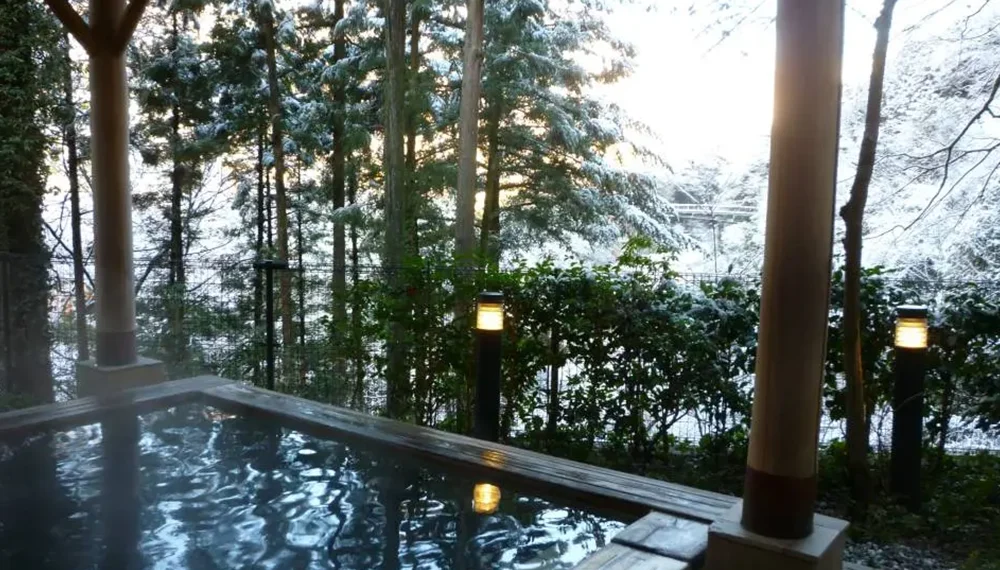
- Share this page
Share this page
- EN
Select Language
- FAVORITES
- Search
Detailed search: You can do a detailed search by keyword, genre, time, area and tag.
Main content starts here.
- Visit Tokyo |
- CALENDAR |
- Tokyo Winter Guide
Updated: January 1, 2026
Tokyo Winter Guide
Defeat the biting cold with hearty food, warm baths, and enchanting holiday illuminations
The chill of winter means you'll have to come extra prepared to brave the elements, packing scarves, gloves, down jackets, and more. Once you acclimate to the cold, you'll find the city is full of enchanting spectacles, soothing food, and traditional events that date back several centuries. What's more, the crisp air, deep blue skies, and minimal rain make it the ideal season for looking out over the city center and surrounding landscape from observation decks.
Tips
- From December to February, temperatures average between 6 to 9 degrees Celsius in Tokyo, but it feels colder at night and in the shade. Be sure to come prepared with a heavy jacket, scarf, and winter cap
- If you're still having trouble dealing with the chill, go to any convenience store and purchase disposable heating pads that you can adhere to the inside of your shoes, gloves, and jackets
- There are many events in Tokyo in winter. From sparkling Christmas lights to traditional New Year's customs, there are plenty of things to see and do
Winter clothes in Tokyo: How to dress for the weather
It sometimes snows in Tokyo during the winter, but not often. Snow generally falls in January and February, the coldest time of year in the city, but rarely settles. It's a good idea to bring warm coats, jackets, sweaters, gloves, and scarves to protect against the cold. Despite the cold, it's often sunny, making it a great season for sightseeing, as long as you're warmly dressed.
Transportation in wintry Tokyo
Tokyo winters don't see much snow, so train, buses, and other forms of transportation operate as usual. Snow rarely accumulates, but if strong winds or heavy snow are forecast, railway companies may schedule planned suspensions of train services to protect public safety. These suspensions are announced in advance, so remember to check the news and official railway websites during your trip for information.
Enjoy a relaxing Japanese “nabe” hot pot meal in Tokyo
Japanese cuisine changes with the seasons. Nabe hot pots are a staple of Japanese winter, and you can find all kinds of them in Tokyo. Head to the Ryogoku area, home of the Ryogoku Kokugikan sumo arena, to sample chanko nabe—the type of hot pot that sumo wrestlers eat. Sumo wrestlers eat chanko nabe to build up their body, so the dish includes nutritionally balanced ingredients. There are also plenty of other hot pot-style dishes, such as sukiyaki, shabu-shabu, and motsu nabe (offal hot pot) available at specialty restaurants, and Japanese-style pubs called izakaya.

Chanko nabe
Enjoy "oden," a casual dish of stewed meats and veggies you can find throughout the city
From humble stalls to high-class restaurants, there are a huge number of places in Tokyo that serve "oden"—a selection of stewed fish cake, meats, and veggies.In the winter months, you'll find oden on sale at many convenience stores in the city. At a convenience store, you can order specific ingredients from oden pots that sit next to the cash register. To order, simply tell the staff which ingredients you want in English or point to them. You'll get a pair of chopsticks and a bowl with your order, so you can enjoy some warm take-out oden at a nearby park or bench. It's a very Japanese flavor that you can casually enjoy throughout the city on cold winter days.

Convenience store oden has many ingredients to choose from
Tokyo's winter illuminations: Enjoy a stroll under the lights
Tokyo winters come alive with extravagant illuminations and festive decorations for occasions like Christmas and Valentine's Day. Popular spots for illuminations include the tree-lined streets of Omotesando, Ginza, and Ebisu. Marunouchi district, Tokyo Midtown in Roppongi, and the Meguro River in Nakameguro are also popular. You can check illumination spots with the “Winter Illumination Guide.”
 Marunouchi Illumination
Marunouchi Illumination Tokyo Midtown Illumination
Tokyo Midtown IlluminationRefresh at Tokyo's onsen
Winter is the perfect season to enjoy a traditional bath or take a dip in a hot spring. Tokyo has numerous Onsen and Bathhouses.

Enjoy an open-air bath (Okutama Onsen Moegi-no-Yu)
Festivals & Traditional Events
Festivals are held in Tokyo throughout the year. One characteristic of Japan's traditional festivals is that they let you celebrate the four seasons: cherry blossom festivals in spring, fireworks displays and bon-odori dances in summer, and autumn festivals where you can enjoy bright, colorful leaves.
What delights can you experience during winter festivals in Tokyo?
New Year's customs
If you happen to be in Japan over the New Year's holiday, head to Meiji Jingu Shrine to partake in "hatsumode" (the first temple/shrine visit of the new year). Meiji Jingu, which enshrines the Emperor Meiji and his wife, is visited by over 3 million people over the first three days of the new year. It's known for being the most popular place in Japan to go for hatsumode.

Meiji Jingu Shrine
Bean-throwing festivals
Every year, February 3 is "Setsubun," which means "dividing the seasons." It's considered the last day of winter, and comes a day before what's considered the first day of spring. The traditional Japanese way to celebrate is with a bean-throwing festival. People scatter roasted soybeans outside while saying "out with demons" to ward off bad luck and scatter them inside while saying "in with good fortune" to bring good luck.
At Zojoji Temple, you can try scattering beans for yourself and enjoy food from various stalls. At Sensoji Temple, people believe that no demons would dare appear before the enshrined Kannon bodhisattva—so people focus on chants for good luck.
Setsubun takes place at shrines and temples all over the city, including Ookunitama-jinja Shrine and Kanda Myojin Shrine, and draws many visitors. Bean-throwing festivals are less known to tourists, but are open to everyone and can only be enjoyed in Japan in winter.

Kanda Myojin Shrine's Setsubun Festival
Note: See 'The Best Festivals in Tokyo and Japan' for more details about festivals held in Tokyo throughout the year.